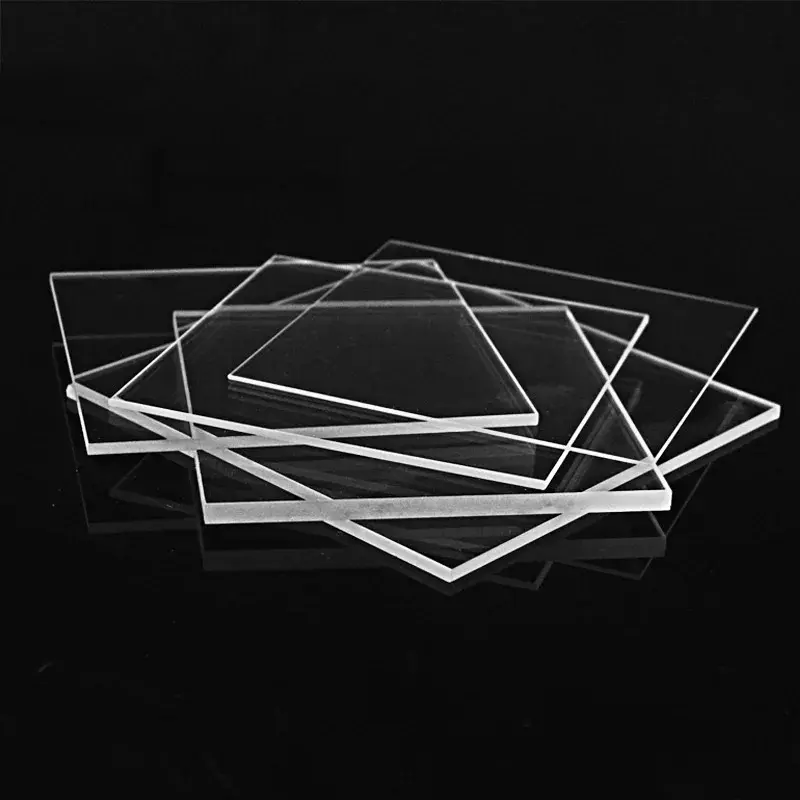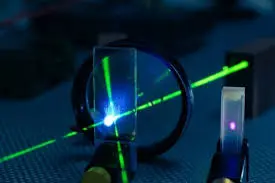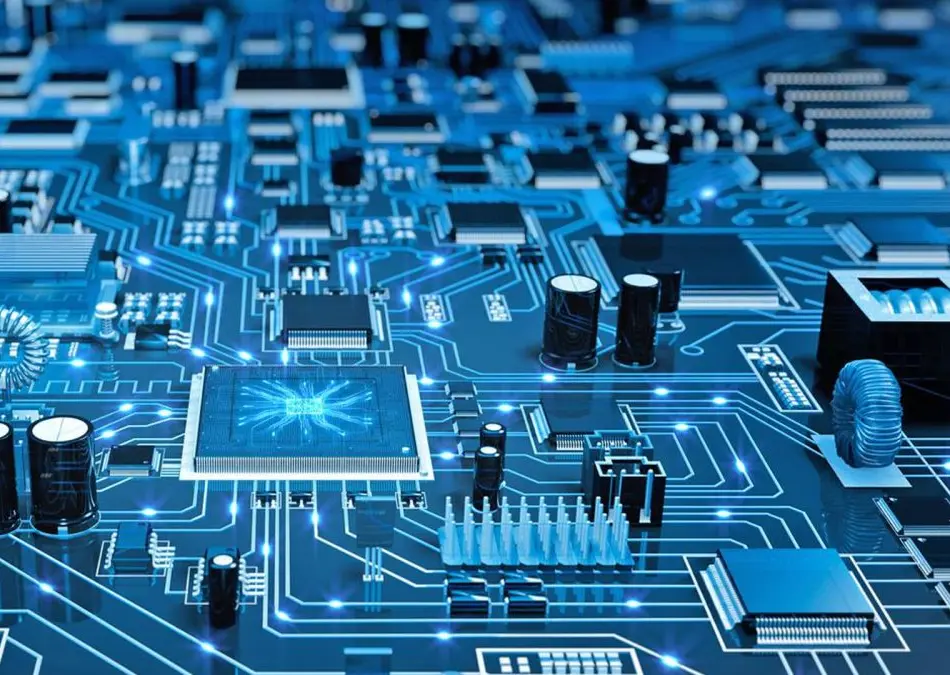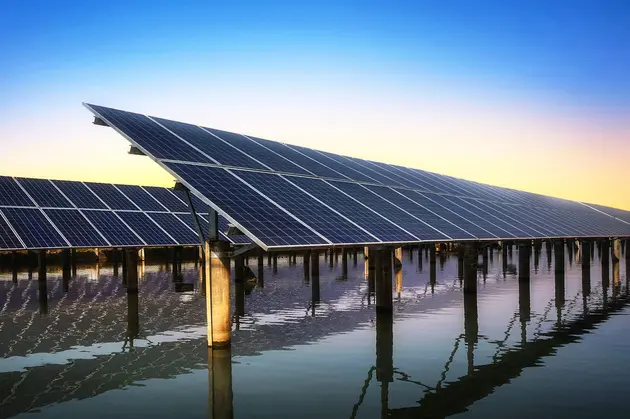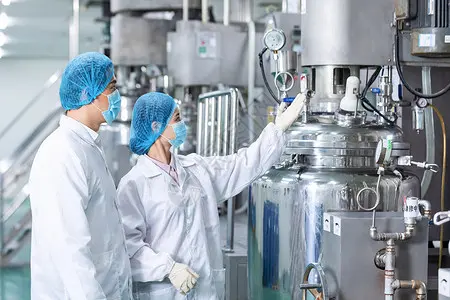Quartz glass sheets are a specialized type of glass characterized by high transparency, high-temperature resistance, and strong chemical stability. They are widely used in fields such as optical fiber communication, semiconductor manufacturing, and medical equipment. Renowned for their exceptional optical properties, low thermal expansion coefficient, and excellent electrical insulation, quartz glass sheets are an indispensable material in various high-tech applications.
| Length | Width | Thickness |
|---|---|---|
| 5mm | 5mm | 1mm |
| 10mm | 10mm | 0.5mm |
| 10mm | 10mm | 1mm |
| 10mm | 10mm | 2mm |
| 12mm | 12mm | 1mm |
| 15mm | 15mm | 0.5mm |
| 15mm | 15mm | 1mm |
| 15mm | 15mm | 2mm |
| 15mm | 15mm | 3mm |
| 20mm | 20mm | 0.5mm |
| 20mm | 20mm | 1mm |
| 20mm | 20mm | 2mm |
| 20mm | 20mm | 3mm |
| 25mm | 25mm | 0.5mm |
| 25mm | 25mm | 1mm |
| 25mm | 25mm | 2mm |
| 25mm | 25mm | 3mm |
| 30mm | 30mm | 0.5mm |
| 30mm | 30mm | 1mm |
| 30mm | 30mm | 2mm |
| 30mm | 30mm | 3mm |
| 35mm | 35mm | 1mm |
| 35mm | 35mm | 2mm |
| 35mm | 35mm | 3mm |
| 40mm | 40mm | 0.5mm |
| 40mm | 40mm | 1mm |
| 40mm | 40mm | 2mm |
| 40mm | 40mm | 3mm |
| 45mm | 45mm | 1mm |
| 45mm | 12mm | 1mm |
| 45mm | 12mm | 2mm |
| 35mm | 35mm | 2mm |
| 50mm | 50mm | 0.5mm |
| 50mm | 50mm | 1mm |
| 50mm | 50mm | 2mm |
| 50mm | 50mm | 3mm |
| 50mm | 50mm | 4mm |
| 50mm | 50mm | 5mm |
| 60mm | 60mm | 1mm |
| 60mm | 60mm | 2mm |
| 60mm | 60mm | 3mm |
| 70mm | 70mm | 2mm |
| 70mm | 70mm | 3mm |
| 70mm | 70mm | 5mm |
| 75mm | 25mm | 0.5mm |
| 75mm | 25mm | 1mm |
| 75mm | 25mm | 2mm |
| 80mm | 80mm | 1mm |
| 80mm | 80mm | 2mm |
| 80mm | 80mm | 3mm |
| 80mm | 80mm | 4mm |
| 100mm | 100mm | 1mm |
| 100mm | 100mm | 1.5mm |
| 100mm | 100mm | 2mm |
| 100mm | 100mm | 3mm |
| 100mm | 100mm | 5mm |
| 100mm | 100mm | 0.5mm |
| 100mm | 100mm | 1mm |
| 100mm | 100mm | 2mm |
| 100mm | 100mm | 3mm |
| 100mm | 100mm | 5mm |
| 150mm | 150mm | 2mm |
| 150mm | 150mm | 3mm |
| 150mm | 150mm | 5mm |
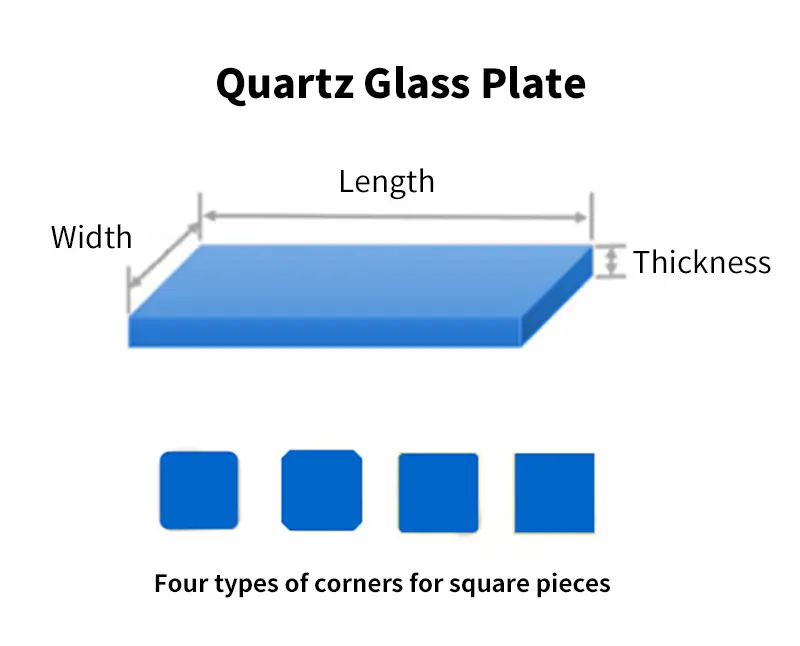
- 지원 방법: 주문 수량에 따라 계좌 이체 또는 선불로 결제합니다.
- 배송 시간: 주문 수량에 따라 다릅니다.
- 운송 방법: 고객에 따라 해상 운송 또는 항공 운송.
비고:비고
To confirm the order, The following parameters need to be provided: ① Square: length, width, thickness ② Circle: diameter, thickness ③ Accuracy ④ Quantity
| 속성 콘텐츠 | 속성 값 |
|---|---|
| SiO2 | 99.99% |
| 밀도 | 2.2×10³ kg/cm³ |
| 경도 | 5.5 - 6.5 모스 스케일 570 KHN 100 |
| 인장 강도 | 4.8×10⁷ Pa(N/mm2)(7000psi) |
| 압축 강도 | >1.1×10⁹ Pa(160,000psi) 이상 |
| 열팽창 계수 | 5.5×10-⁷ cm/cm-°C(20°C-320°C) |
| 열 전도성 | 1.4W/m-°C |
| 비열 | 670 J/kg-°C |
| 연화 포인트 | 1730°C(3146°F) |
| 어닐링 포인트 | 1210°C(2210°F) |
| 스트레인 포인트 | 1120°C(2048°F) |
| 작업 온도 | 1200°C(2192°F) |
| 전기 저항 | 7×10⁷ 옴 cm(350°C) |
| 크기 | 사용자 지정 |
| 로고 | 맞춤형 로고 수락 |
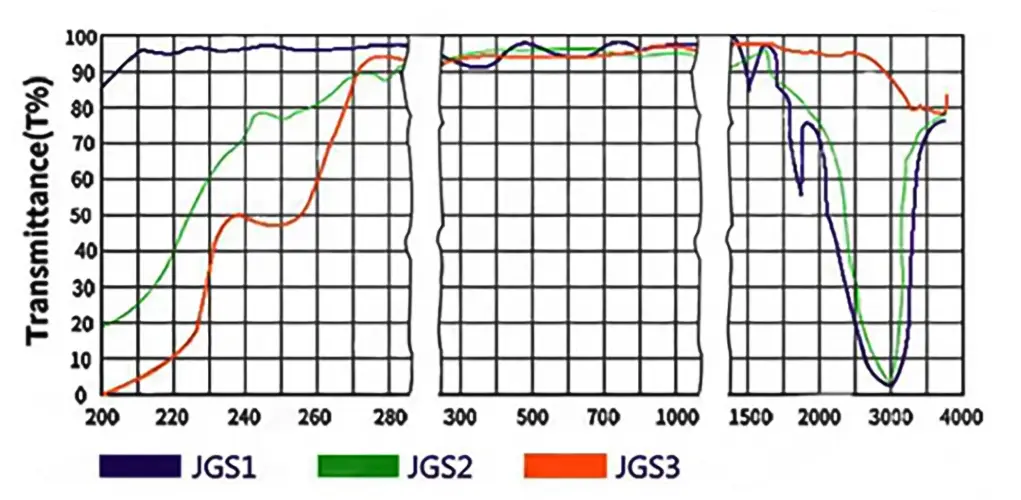
JGS1
Commonly known as UV-grade fused silica, this material exhibits exceptionally low dispersion and very high transmittance in the ultraviolet (UV) spectral range.
JGS2
Similar to JGS1, but may have variations in specific performance parameters such as transmittance and thermal expansion coefficient, depending on the manufacturer’s standards.
JGS3
Typically used in applications requiring higher purity or specialized performance characteristics. Specific performance parameters can vary based on the manufacturer.
Dispersion Characteristics
JGS1 and JGS2 quartz sheets exhibit excellent dispersion properties in the ultraviolet (UV) spectral range, effectively separating UV light of different wavelengths. This makes them ideal for manufacturing high-performance optical components.
투과율
All three types of quartz sheets have high transmittance to UV light, especially within specific wavelength ranges. For example, JGS1 has very high transmittance from 185 nm to 2,500 nm. This makes them the preferred materials for manufacturing UV lasers, UV spectrometers, and optical filters.
화학적 안정성
Quartz sheets possess excellent chemical stability and can withstand harsh conditions, including acids, alkalis, and high temperatures. Therefore, they are suitable for manufacturing chemical reactors, high-temperature furnace windows, and chemical analysis instruments.
낮은 열팽창 계수
These quartz sheets have very low thermal expansion coefficients, exhibiting minimal response to temperature changes. This is crucial for the stability of high-precision optical components.
애플리케이션 시나리오
Quartz sheets exhibit excellent high-temperature resistance, corrosion resistance, thermal stability, and light transmittance. Its softening point is approximately 1730°C, and it can be used continuously at 1100°C, with short-term usage up to 1450°C. Quartz glass is highly resistant to acids, with the exception of hydrofluoric acid, and demonstrates high resistance to chemical reactions with most other acids. Quartz sheets have a very low thermal expansion coefficient, enabling them to withstand rapid temperature changes without fracturing. They also exhibit good light transmittance across the entire UV to IR spectrum, with a visible light transmittance exceeding 93%.
Based on optical properties, quartz sheets are classified into three categories: far-ultraviolet (FUV) optical quartz glass (JGS1), ultraviolet (UV) optical quartz glass (JGS2), and infrared (IR) optical quartz glass (JGS3). These different types of quartz glass exhibit variations in transparency, absorption band positions, etc., in the UV and visible spectral ranges.
The processing of quartz sheets includes rough processing steps such as raw material sorting, rod bonding, seed crystal cutting, and rounding. This is followed by grinding stages, such as rough grinding, medium grinding, and fine grinding. Afterwards, polishing and cleaning processes are conducted to ensure surface quality and stability of the wafers. Finally, mounting and die-bonding involves fixing the quartz sheets with applied electrodes and applying conductive adhesive to the contact points between the electrodes and metal pads to achieve electrical connection.
자주 묻는 질문
석영 유리는 우수한 물리적 및 화학적 특성, 매우 높은 기계적 경도, 우수한 전기 절연성, 고온 및 내식성, 낮고 안정적인 지연 성능, 우수한 빛 투과율 등을 갖춘 단단하고 부서지기 쉬운 소재입니다. 반도체, 광학, 전기, 화학, 항공우주, 자동차 및 기타 분야에서 널리 사용됩니다. 단단하고 부서지기 쉬운 재료는 가공이 어렵고 많은 분야에서 가장자리 붕괴가 적고 재료 손실이 적으며 단면 거칠기가 낮고 절단 두께 범위가 넓은 절단 공정이 절실히 필요합니다. 석영 유리의 전통적인 절단 방법은 기계식 절단, 즉 휠 절단입니다. 비 전통적인 절단 방법에는 워터젯 절단, 전기 화학 방전 와이어 절단, 연속 레이저 절단 등이 포함됩니다. 기계식 절단은 비용이 저렴하지만 휠과 재료 사이의 접촉으로 인해 공구 마모가 크고 재료가 공구에 의해 쉽게 오염됩니다. 석영 유리는 가장자리 붕괴, 미세 균열 및 잔류 응력이 발생하기 쉬우므로 재료의 강도와 성능에 영향을 미칩니다! 곡선 절단이 어렵고 연마 및 연마와 같은 후처리가 필요합니다. 레이저 절단은 재료에 직접 접촉하지 않고 접촉 응력이 없으며 복잡한 곡선 절단을 수행할 수 있습니다. 피코초 레이저는 작은 스폿 직경, 고정밀, 재료와의 짧은 작용 시간, 작은 작용 면적의 장점을 가지고 있으며 단단하고 부서지기 쉬운 재료의 가공에 적합합니다.
。

